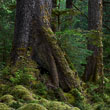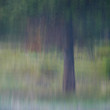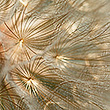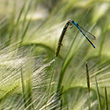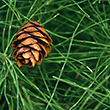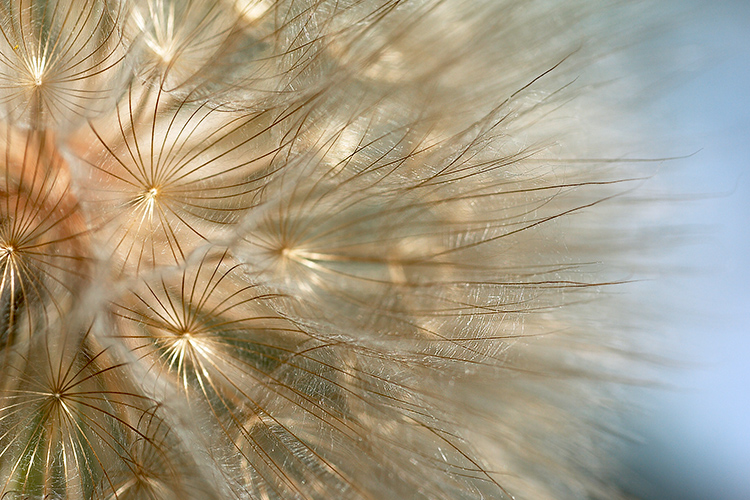
In the Field
Transitions. Findlay Creek, BC, Canada. July 10, 2004.
I love "extracting" a small subset of our total visual environment and, in pulling it out of context, present it as a discrete piece of natural art. Sometimes this involves using specialized close-up equipment (like macro lenses and ringlights), but commonly it only involves changing how you look at the world around us.
This is close-up image of a Goatsbeard (or Yellow Salsify) flower after it has gone to seed. They look similar to a giant dandelion at this stage. This image wasn't really visible to the naked eye - I produced it by focusing right through the fuzzy seed ball until I found the composition I liked the most. Then it was simply a matter of choosing an aperture that would produce the transition from sharp focus to smooth blurs that I was looking for. It helped that the plant was strongly side-lit, which made the smallest of fibres on the plant stand out.
I call this image "Transitions" because this is what I see when I look at it - transitions from sharp focus to soft, smooth out-of-focus zones and transitions in colour from golden brown in the foreground through to a grey-blue background.
Behind the Camera
Transitions. Findlay Creek, BC, Canada. July 10, 2004.
Digital Capture; Compressed RAW (NEF) format; ISO 200.
Nikon D2H with Nikon AF Micro 60 mm f/2.8 lens (90 mm equivalent with digital conversion factor) supported on Gitzo G2220 Explorer tripod with Manfrotto 222 Joystick ballhead. Nikon MC-20 cable release.
1/1500s @ f3.7; no compensation from matrix-metered exposure setting
At the Computer
Transitions. Findlay Creek, BC, Canada. July 10, 2004.
RAW Conversion to 16-bit TIFF, including first-pass sharpening, exposure compensation, and tone curve adjustment, using Phase One's C1 Pro.
All further digital correction on 16-bit TIFF file using Adobe's Photoshop CS, including selective and graduated application of cooling filter, selective saturation enhancement and selective sharpening for web output.
Conservation
Transitions. Findlay Creek, BC, Canada. July 10, 2004.
Ten percent of the revenue generated by this image will be donated to Wildsight.
Species Status in Canada*: This species is not designated as at risk.
Goatsbeard or Yellow Salisfy (Tragopogon dubius) resembles a large dandelion and flowers from early spring through to late fall. The species was originally introduced from Europe and quickly spread throughout much of North America. Today goatsbeard is found from the southern Northwest Territories south to New Mexico. Although stunning in appearance, goatsbeard is considered a weed by many.
This specimen of goatsbeard was photographed in the Columbia Valley of the East Kootenays. While this species is not currently not considered at any risk itself, many ecosystems within the Columbia Valley face development pressure, including pressure from logging operations. Wildsight is an effective conservation organization that protects biodiversity and promotes sustainable communities in Canada's Columbia and Rocky Mountains. Support for Wildsight, through donation or becoming a member, will help ensure that they remain effective in their efforts to conserve threatened or endangered species and ecosystems.
*as determined by COSEWIC: The Committee on the Status of Endangered Wildlife in Canada


















